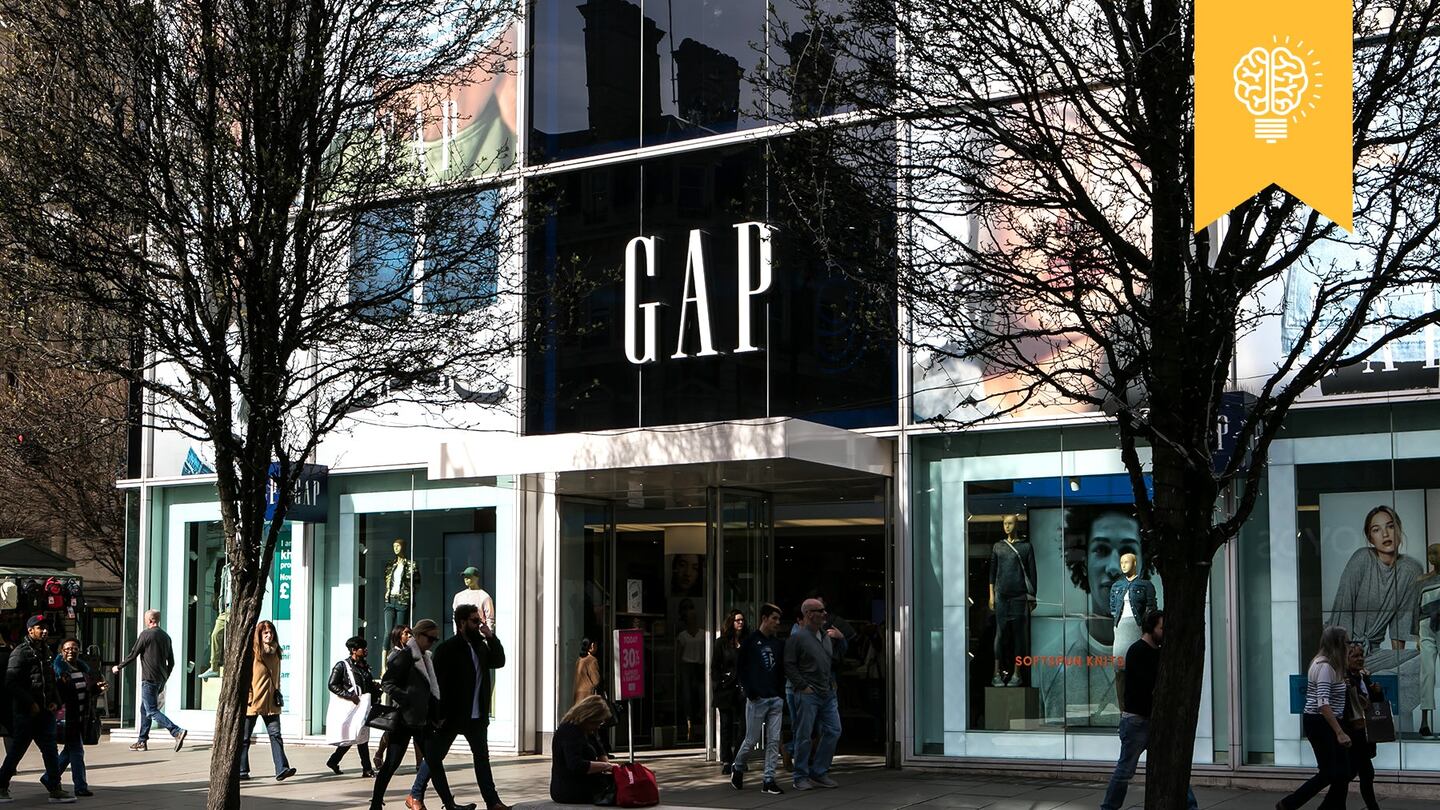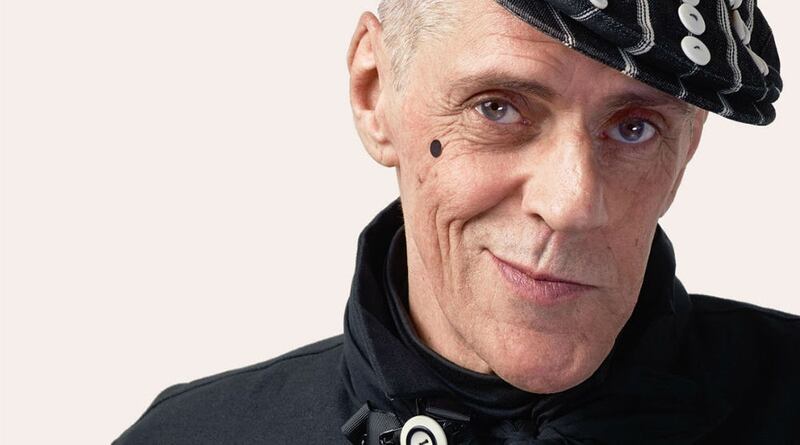
The Business of Fashion
Agenda-setting intelligence, analysis and advice for the global fashion community.

Agenda-setting intelligence, analysis and advice for the global fashion community.

Hello BoF Professionals, your exclusive weekly briefing is ready, with members-only analysis and a digest of the week’s top news. Don't forget to download the BoF Professional iPhone app to read this on your phone and get breaking news alerts.
On Tuesday, Gap Inc. announced the resignation of Gap brand president and chief executive Jeff Kirwan, who held the job for three years. “While I am pleased with our progress in brand health and product quality, we have not achieved the operational excellence and accelerated profit growth that we know is possible at Gap brand,” said Gap Inc. chief executive Art Peck in a statement.
The Gap brand, once revered for its casual uniform of khakis and white T-shirts, has long struggled to reclaim the glory of its 1990s heyday, when it was led by “merchant prince” Mickey Drexler. Indeed, Gap has not grown in more than a decade. Shifting consumer tastes, declining traffic to American shopping malls and the rise of European “cheap and chic” fast fashion players like Zara and H&M have put intense pressure on the brand and its business model. But according to experts and sources close to the company, many of Gap’s wounds are self-inflicted.
To its credit, the brand has taken steps to rationalise its bloated retail footprint, closing unproductive stores and combining Gap stores with Gap Kids and Baby Gap outlets to make better use of real estate. As Peck notes, the brand has also made progress on product quality. But this hasn’t been enough to offset lacklustre design in a world where consumer expectations have far outpaced the company’s ability to innovate and the pervasive feeling that Gap just isn’t cool anymore.
ADVERTISEMENT
On the matter of brand, Gap has a strong heritage and Peck says he’s pleased with the company’s progress here. But it remains unclear what exactly Gap stands for and who it’s targeting. In a market full of speciality brands focused on tight niches, it’s increasingly untenable to be everything to everyone. “There’s competition in the form of teen brands, Millennial brands, women’s-only brands… Every niche in the market has a specialty brand and the best of those push Gap back to second choice where it was once first choice,” explained a former Gap executive on condition of anonymity.
For a brand that sits in the heart of San Francisco, Gap has also been slow to take advantage of the technology ecosystem on its doorstep and could benefit from a more robust innovation strategy. But this also points to a far deeper issue. The company is simply not as future-looking as it needs to be. Some of this is due to pressure from shareholders demanding short-term results. But the root of the issue is a culture shaped by past glory that is unable to evolve.
To be sure, the company has been slow to adapt to a new reality where technology-driven supply chains, exemplified by Zara, are as important as design. Gap needs to reduce its dependence on design-led collections and invest in greater speed and flexibility, becoming more responsive to consumer demand and thereby boosting productivity. Peck understands this. He values data over design and has called creative directors “false messiahs.” But driving change is easier said than done.
“Retrofitting faded glory is difficult,” said John S. Thorbeck, chairman of Chainge Capital, a supply chain advisory firm. “It’s very hard to refashion an old model to compete with new models.” Engendering this kind of shift requires more than the right strategy. It requires strong leadership.
“Mickey Drexler could not adapt, Paul Pressler was indecisive, Glenn Murphy controlled costs and bought time, and now Art Peck is the tough guy who believes that strategy and data will win,” said Thorbeck. “But we all know that culture eats strategy for breakfast.”
“Gap must create a culture for style, speed and flexibility,” added Thorbeck. “Gap cannot merchandise its way back to glory.”
THE NEWS IN BRIEF
BUSINESS AND THE ECONOMY
ADVERTISEMENT

Stella McCartney | Source: Shutterstock
Stella McCartney-Kering break up well underway. After 17 years of partnership, the French luxury group is selling its 50 percent share of Stella McCartney back to the namesake designer, according to a source. A formal transition process is already in motion and a public announcement, originally slated for early January, is imminent.
Fosun buys majority stake in Lanvin. The Chinese conglomerate has completed a deal to become the majority shareholder in Lanvin. BoF reported that the firm beat off competition from Qatari investment fund Mayhoola and would inject more than €100 million into the near-bankrupt French label. Fosun gave no financial details of the transaction. It said current shareholders Shaw-Lan Wang, who owned 75 percent of the firm, and Swiss businessman Ralph Bartel, who had 25 percent, would both retain minority stakes.
Sir Phillip Green denies reports of Arcadia sale. The retail billionaire has denied talks on a sale of Arcadia Group to Chinese textiles company Shandong Ruyi. Arcadia, whose brands also include Burton, Miss Selfridge, Dorothy Perkins and Wallis, has 2,800 stores across the world. However, its flagship chain Topshop has struggled against competition from the rise of online rivals, such as Asos and Boohoo. Earlier this month, Ruyi, which already controls Gieves & Hawkes, Sandro and Maje, purchased a majority stake in Swiss luxury brand Bally.
Charlotte Olympia files for bankruptcy protection in the US. The luxury shoe and accessories brand plans to liquidate its operations in the country after losing over $6 million in 2017. In the fiscal year ending March 31, 2017, Charlotte Olympia Holdings saw revenues of £16.8 million (about $23 million) and registered a total comprehensive loss of £6.4 million. Its US subsidiaries owe $20 million in unsecured debts, not including its debts to landlords such as the Simon Property Group.
LVMH and Kering launch WeCareForModels.com. Building on the landmark Models' Charter launched last September, the rival French luxury conglomerates have joined forces again to launch a new website providing models with advice on physical and mental well-being.
PEOPLE

Judy Blame | Source: Courtesy
ADVERTISEMENT
Judy Blame passes away. The accessories designer, art director, fashion stylist and punk iconoclast has died, aged 58. Blame came to prominence on London's 1980s club scene, where he made an impact through his signature punk aesthetic and the original jewellery he fashioned himself from modest resources, such as chains and bones plucked out of the Thames, using a technique known as mud-larking.
Fendi appoints chairman and CEO. LVMH has named Christian Dior executive Serge Brunschwig as the new head of Fendi, completing an internal reshuffle at the world's biggest luxury-goods group. Brunschwig, who has worked at LVMH since 1995 and had most recently been in charge of running Christian Dior's menswear unit, succeeds Pietro Beccari who is taking the helm of the overall Dior business.
Karl Templer responds to accusations of sexual misconduct. The photographer has denied accusations of sexual misconduct contained in a major exposé by The Boston Globe. "If if I've ever inadvertently treated a model disrespectfully or without due care on a job, I'm truly sorry," said Templer in a statement. "My work as a stylist includes adjusting clothes on a model. If I have ever made adjustments too quickly or brusquely, and my conduct was misunderstood, then I sincerely apologise. But I categorically deny ever acting with any wrongful intent." The Globe's report also named Patrick Demarchelier, David Bellemere, Greg Kadel, Andre Passos and Seth Saba.
Tomas Maier collaborates with Uniqlo. The creative director of Bottega Veneta and founder of his namesake label is collaborating on a fashion collection with the Japanese apparel giant. The collection, which includes womenswear, menswear and accessories, will launch this summer.
Céline design director lands at Polo Ralph Lauren. Michael Rider, who spent nearly nine years working under Phoebe Philo, has joined the American stalwart as senior vice president and creative director of the women's Polo business. According to a source, Rider will be charged with elevating the mid-priced women's Polo line, which represents a smaller percentage of overall sales than men's Polo.
Guess co-founder gives up duties amid probe for improper conduct. Paul Marciano will relinquish his day-to-day responsibilities at the company, on an unpaid basis, after model and actress Kate Upton accused Marciano of using his power to harass women. The retailer's board in early February had formed a special committee to oversee an ongoing investigation into the allegations.
Goop hires editor-in-chief from Allure. After tripling its year-over-year revenue in 2017, Gwyneth Paltrow's Goop is beefing up its team to keep up with the growth. This includes hiring Danielle Pergament, formerly executive editor of Condé Nast's beauty title, Allure, as editor-in-chief; InStyle's style director Ali Pew as fashion director; and Anne Keane, formerly Lucky magazine's fashion director, as fashion strategy director.
TECHNOLOGY
Vox Media cuts 50 employees. The cuts, which represent a total staff reduction of 5 percent, were confined mostly to workers who produce social media video for fashion site Racked; Curbed, which focuses on real estate; and sports-oriented SB Nation. Chief executive Jim Bankoff cited "industry changes," such as Facebook's recent algorithm changes forcing publishers to shift strategies, as a reason for the cuts.
Apple Watch outperforms Swiss watchmakers. Apple sold more watches than the entire Swiss watchmaking industry at the end of last year, in the latest sign of the marketing might and manufacturing power of the world's largest company. Sales were driven by the release of the third version of the Apple Watch.
Glossier closes another $52 million in funding. The digital-native beauty brand has raised $52 million in Series C funding, its biggest round to date, led by IVP and Index Ventures, bringing its total funding to $86 million. The new capital will go toward improving the overall customer experience.
Condé Nast goes to market with 'Next Generation Network.' The legacy publisher is packaging its new and digital-first brands under one umbrella. The idea is to give advertisers the opportunity to tap into all of its newest brands at once, including Teen Vogue, Them, The Hive, GQ Style, Architectural Digest's Clever, Basically, Healthyish and two more recent additions: Lenny Letter and Iris.
BoF Professional is your competitive advantage in a fast-changing fashion industry. Missed some BoF Professional exclusive features? Click here to browse the archive.
As the German sportswear giant taps surging demand for its Samba and Gazelle sneakers, it’s also taking steps to spread its bets ahead of peak interest.
A profitable, multi-trillion dollar fashion industry populated with brands that generate minimal economic and environmental waste is within our reach, argues Lawrence Lenihan.
RFID technology has made self-checkout far more efficient than traditional scanning kiosks at retailers like Zara and Uniqlo, but the industry at large hesitates to fully embrace the innovation over concerns of theft and customer engagement.
The company has continued to struggle with growing “at scale” and issued a warning in February that revenue may not start increasing again until the fourth quarter.